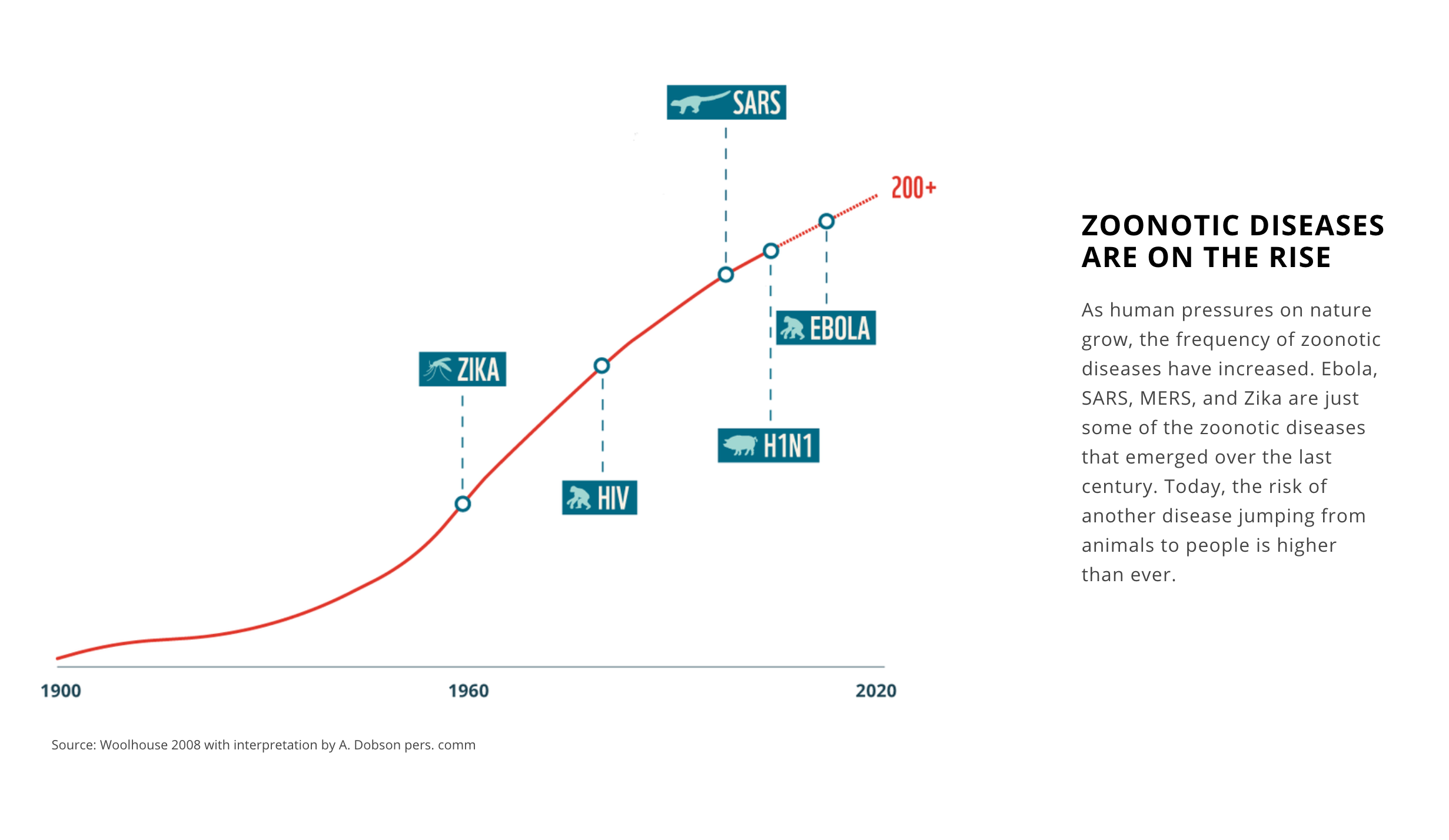When COVID-19 hit the U.S. in early March, we had no idea what we were in for. We marveled at boarded-up bars, people in masks on the street, and loudspeakers blaring apocalyptic messages warning us to “stay away if you are sick” near the metro by our office. To make sense of it all, we focused on how we could use visualization and storytelling to help us cope and understand what was going on around us.
We lucked out. Shortly after we began looking for ways to work on the pandemic, World Wildlife Fund came to us with an ambitious project idea: explain the complex relationship between animals and infectious diseases, like COVID-19. It turns out we actually knew very little about how we got here. COVID-19 is a zoonotic disease or zoonosis, meaning it originated in animals and jumped to humans. In fact most new infectious diseases come from these spillovers and they have been rising steadily as we increase unsustainable interactions with the environment like illegal wildlife trade and habitat destruction. Most of these issues WWF has been working on for years. But COVID-19 has brought many of them to the forefront and forced us to re-examine our relationship with nature.
Making sense of it all
In order to talk about how WWF is working on issues that prevent pandemics, we first needed to talk about the problem itself. To do this, we designed a dedicated pandemics web page and created an animated explainer, a campaign illustration, several static infographics and interactive disease flip cards that allowed users to explore the issue and understand the connection between animals and diseases. The only catch was we had three weeks to do it. We brought on super talented designer Tresson Canley and animator Dave Leonard to help us make it happen. Soon, we had four or five products being developed in tandem so each one helped inform the others. While normally tight deadlines are tough, this one was really fun. It was like a hackathon with all the creating and innovating without any overthinking to bog us down!

The trouble with talking about a pandemic
COVID-19 was an extremely sensitive topic to cover and WWF wanted to strike a delicate balance between seriousness and hope while remaining informative. Our experience working on crisis issues was invaluable in this situation. In addition to covering topics such as dementia and maternal mortality, we had recently worked with the United States Holocaust Memorial Museum on a project tracking the risk of genocide in every country around the world. And although we had experience in this area, we had never covered a crisis from the inside.
They needed the message to reach a general audience with a broad range of pre-existing knowledge on the topic. So the campaign needed to be approachable, but comprehensive enough to communicate the complexity of the issue. They also wanted a strong social media strategy with multiple products being rolled out over time on several platforms including Facebook, YouTube and Instagram.

Making our products work double time
Since the timeframe was so short, we decided to repurpose the animation for social media by producing quick social-friendly snippets or “info bites”, adding overlaid text and adjusting the graphics for smaller screens. These fit perfectly on platforms like Instagram where videos are muted and looped by default.
We worked closely with the WWF web team to construct the homepage within their CMS so it could easily be updated as the situation developed. The campaign illustration was used as the lead image on WWF’s homepage and Seven Mile Media’s own Nick Harbaugh recorded the voiceover for the animation!
In the end, the campaign was a huge success, reaching audiences around the world through WWF’s website and many social media channels and collecting over 20,000 signatures. We learned an incredible amount about zoonotic diseases and felt so fortunate to contribute our small part in combating COVID-19 and future pandemics. Thank you to WWF for the fantastic work and wonderful opportunity!
Check out the project here: https://www.worldwildlife.org/stories/a-call-to-stop-the-next-pandemic

